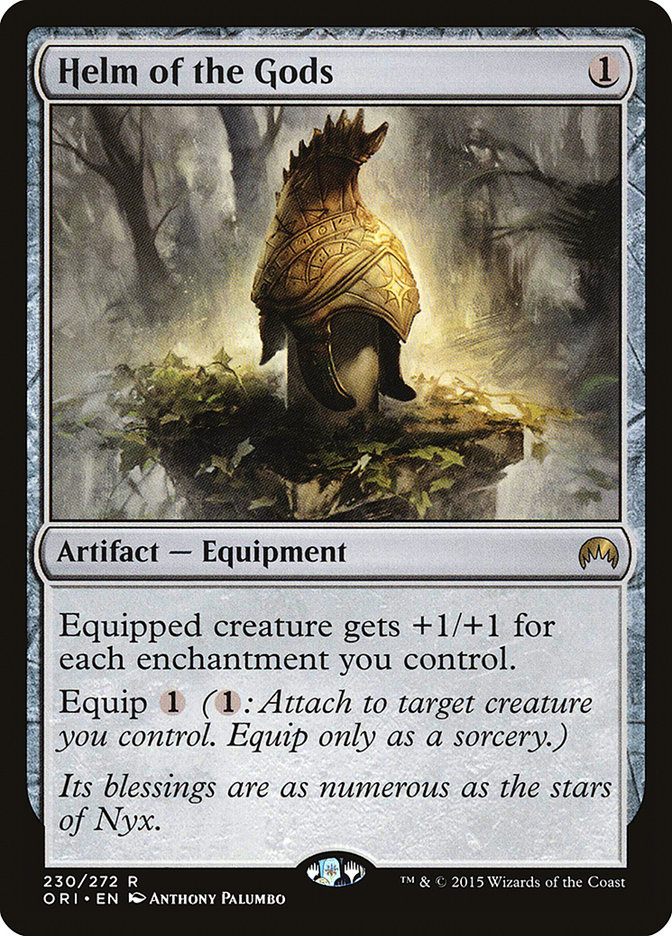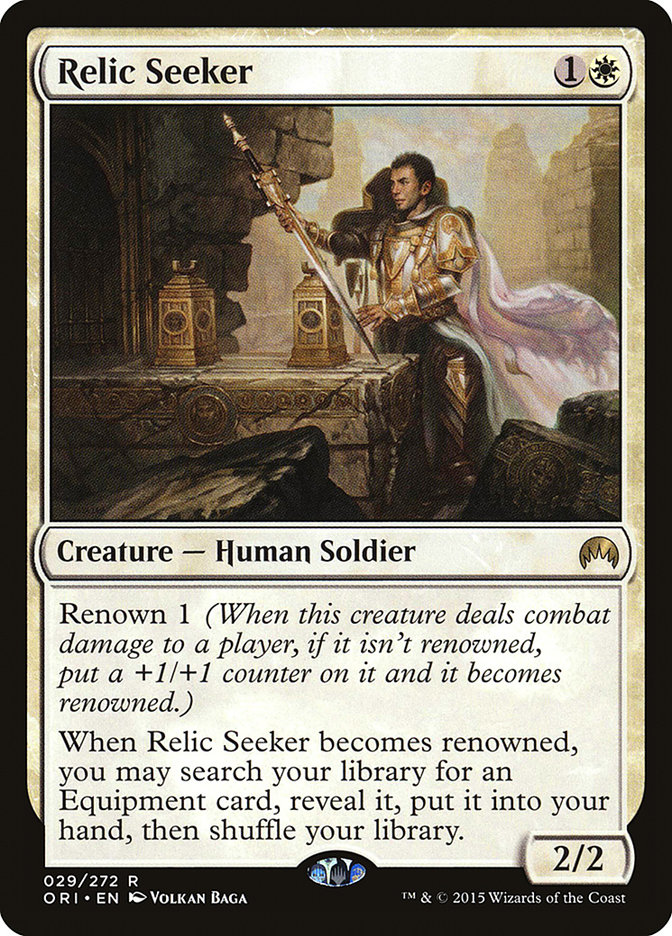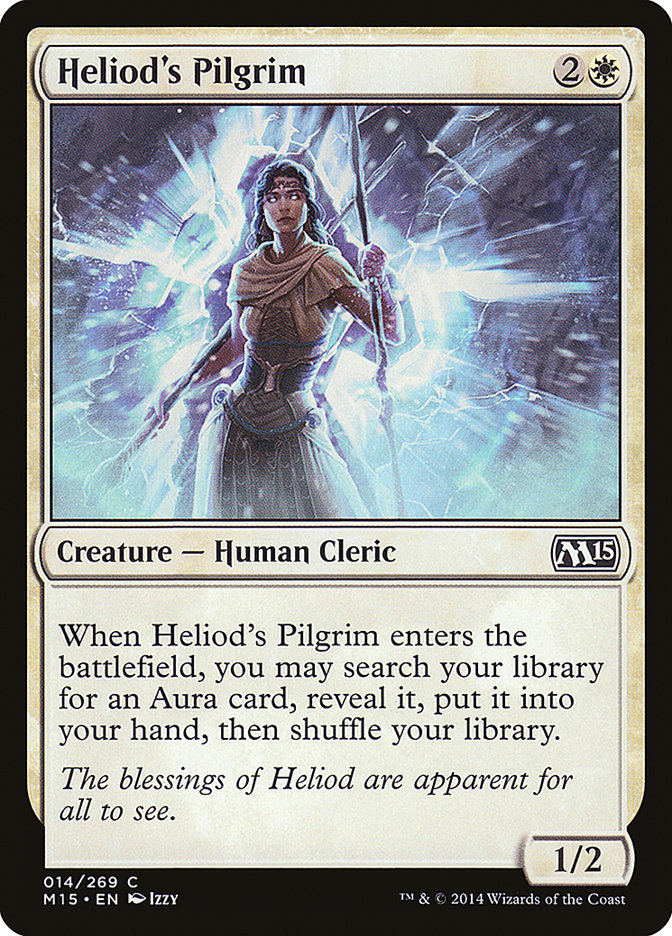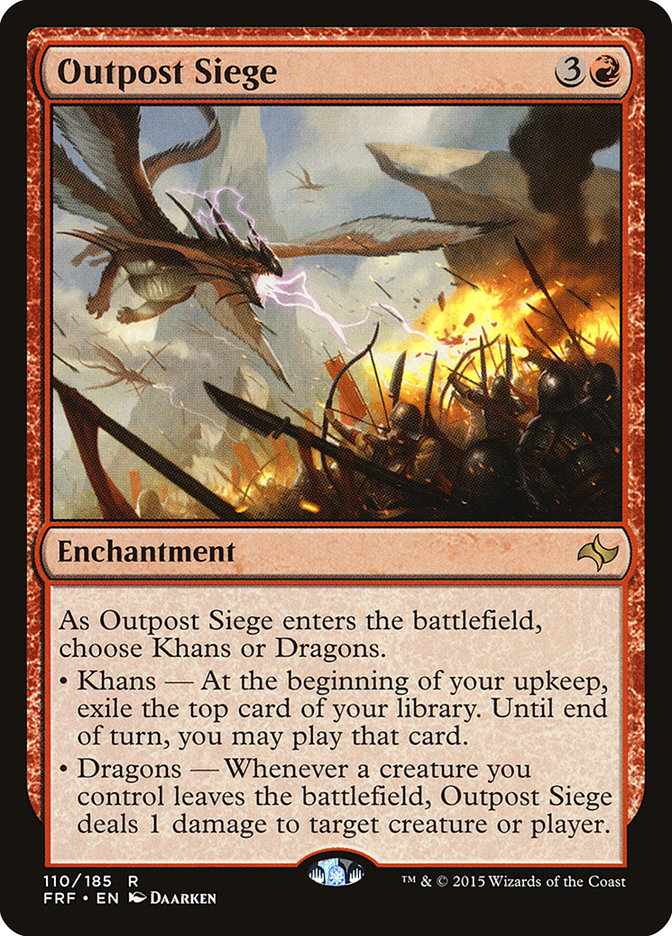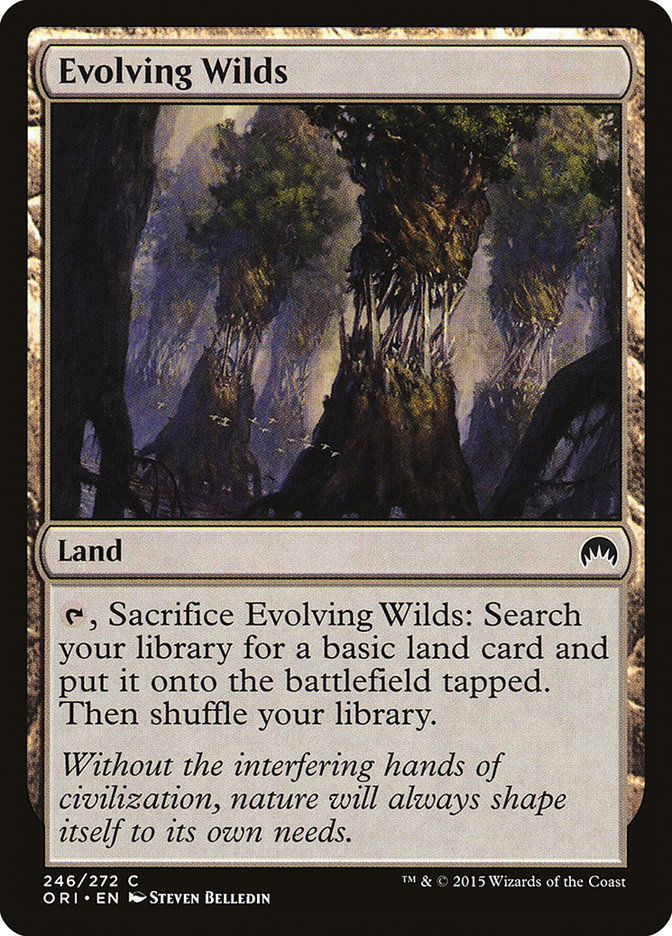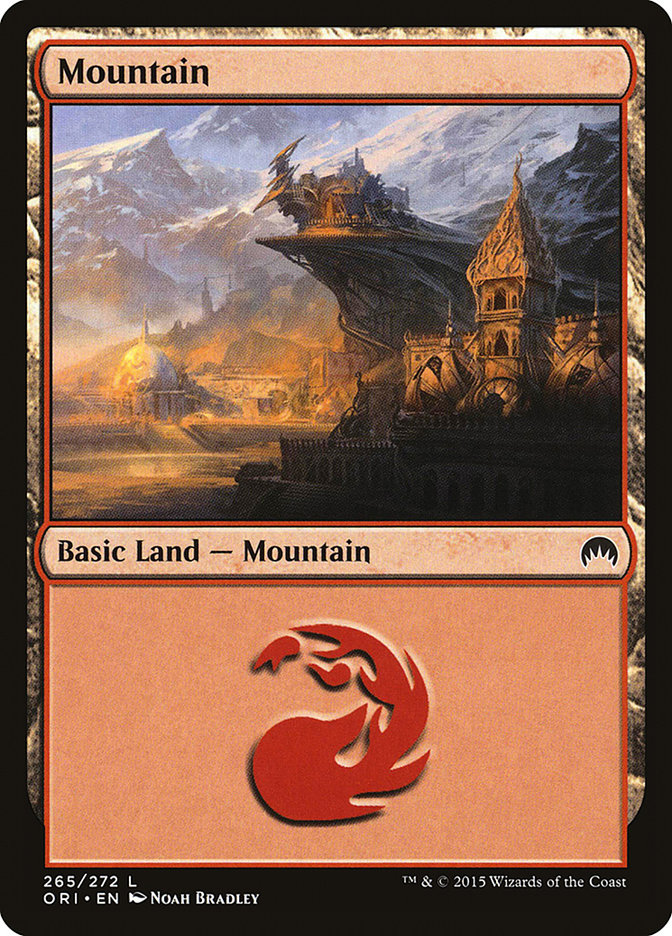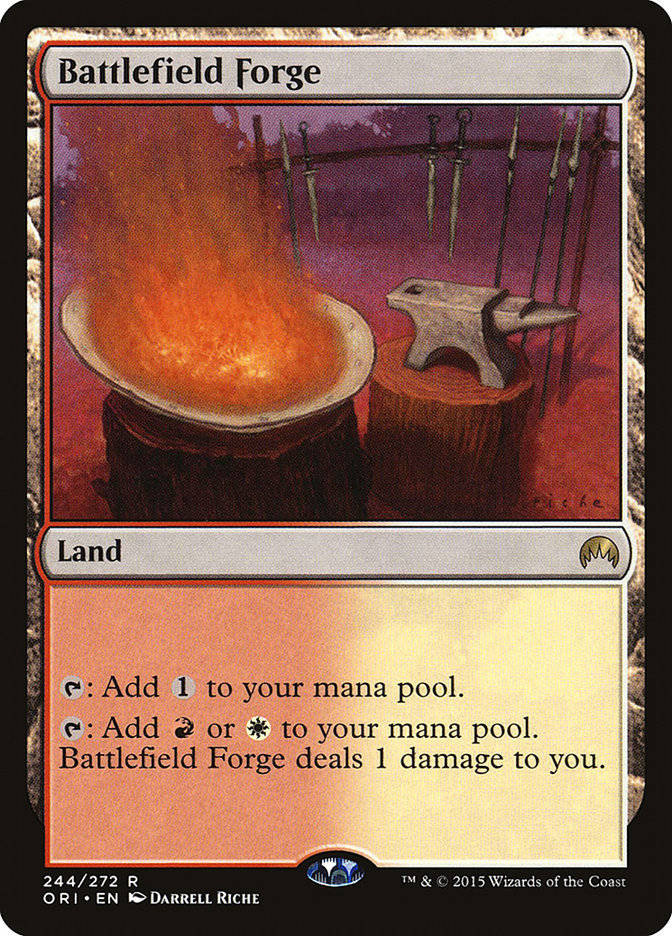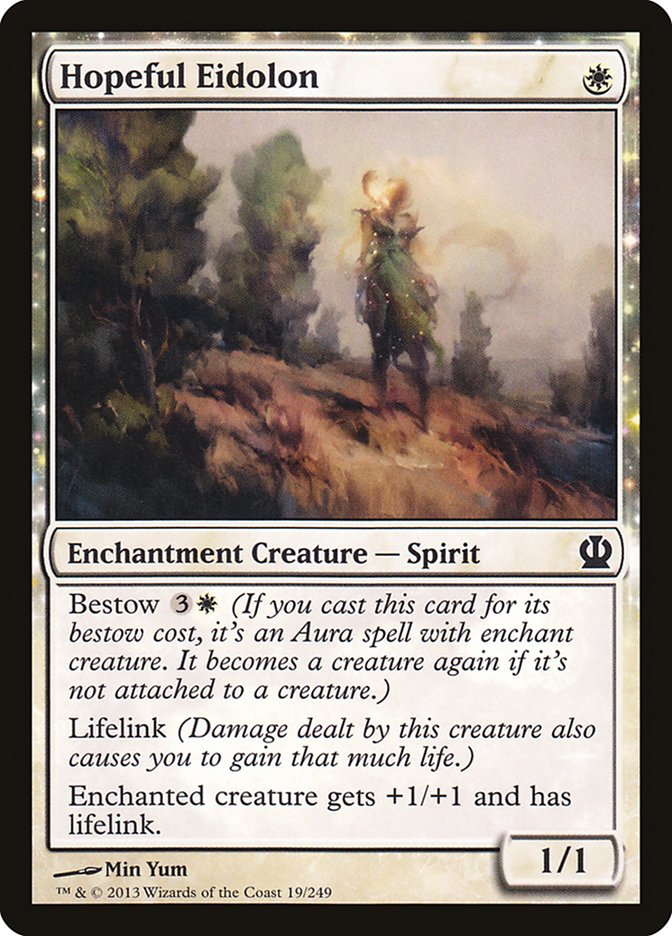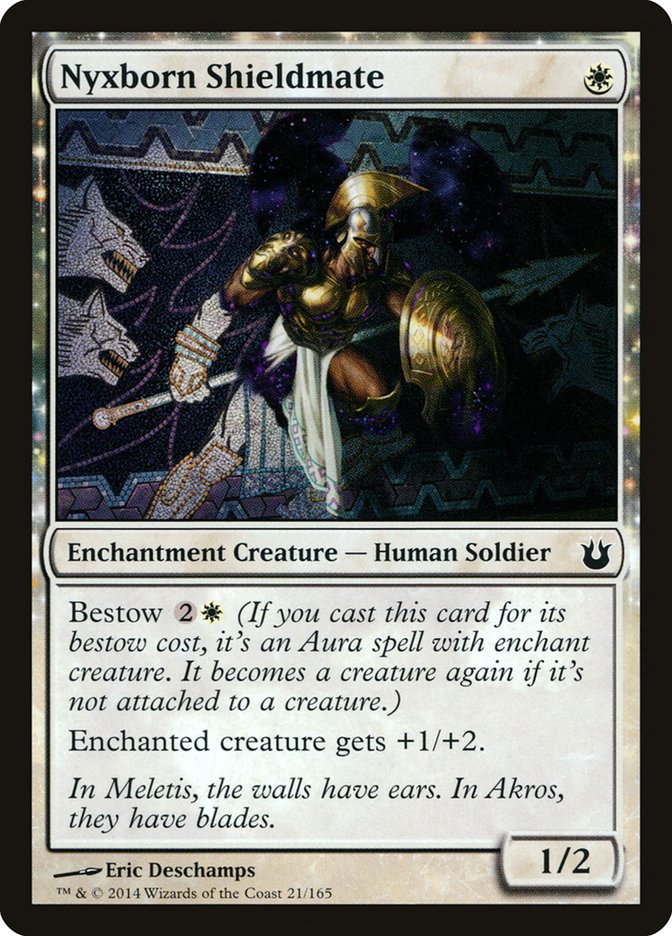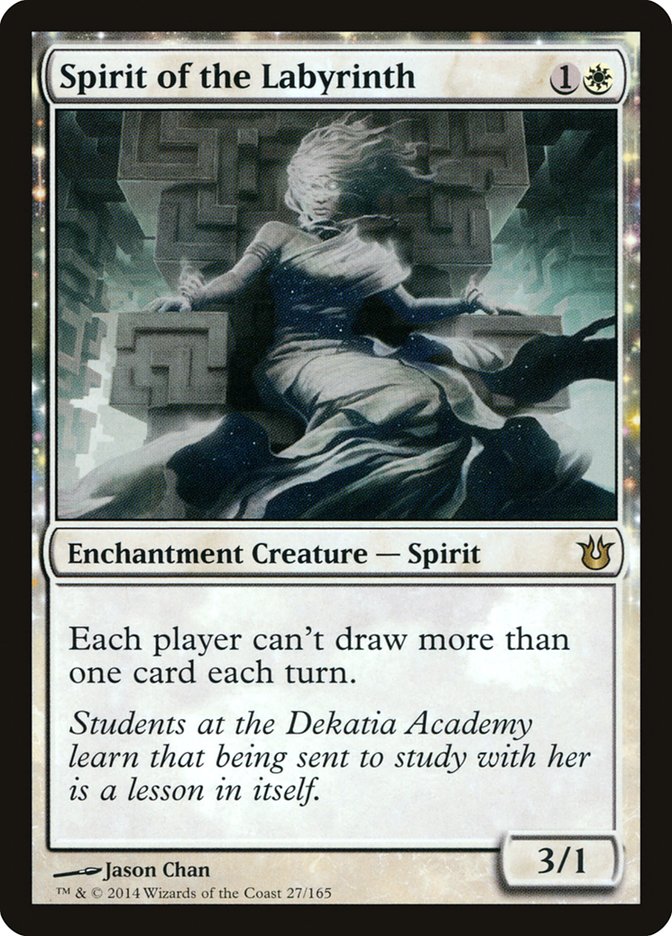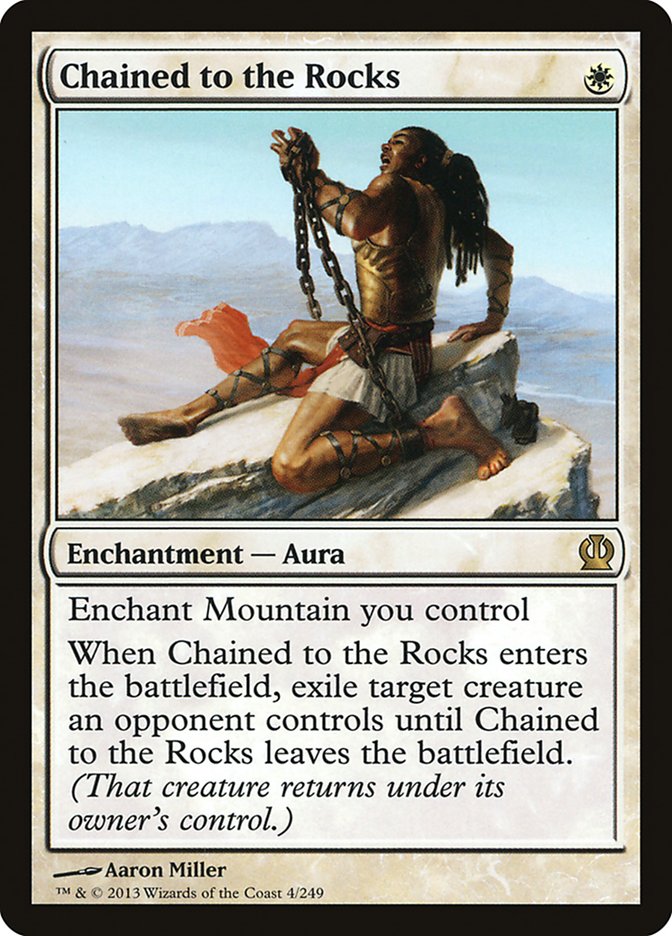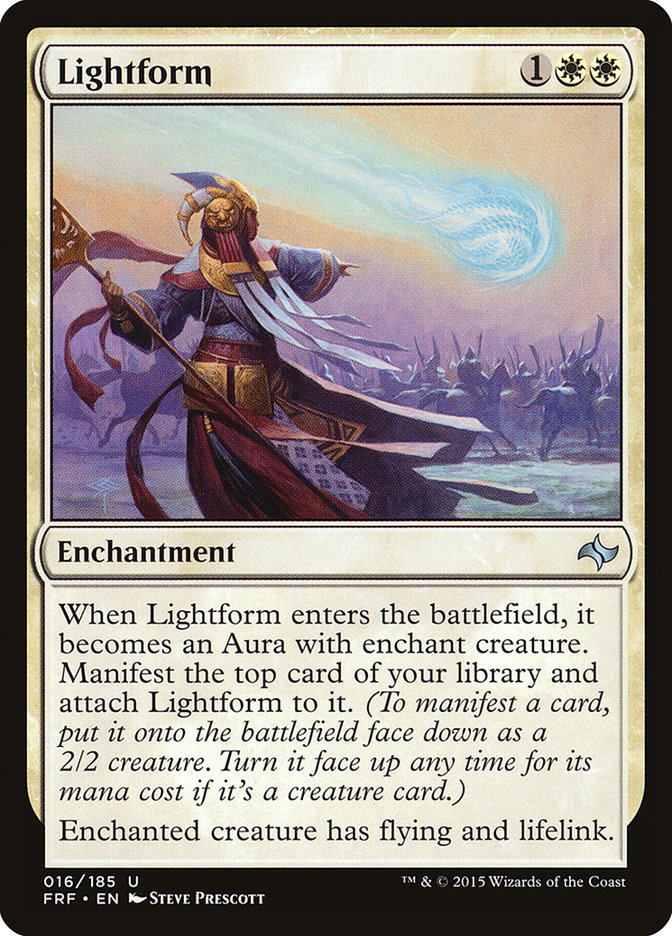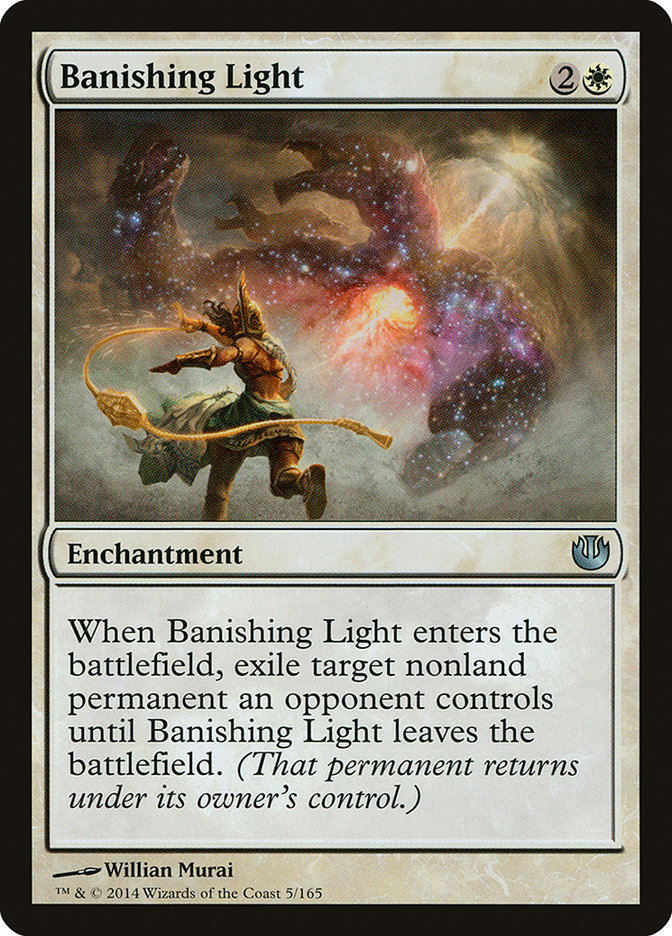Last week we took a very broad look at the effects Magic Origins will have on Standard. This week we take a much more direct and focused approach.
Helm of the Gods is an extremely powerful Magic card. Like, absurdly powerful.
One glance of comparison with Cranial Plating shows a cheaper cost, and most importantly the ability to power up butts as well as providing a huge power boost. Cranial Plating is one of the most powerful cards in one of the most broken aggressive decks of all time.
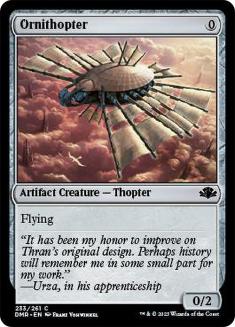
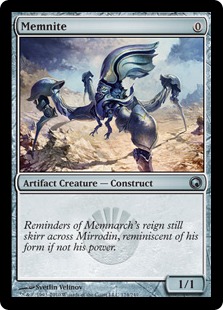
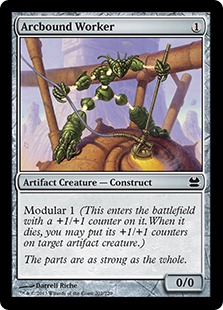
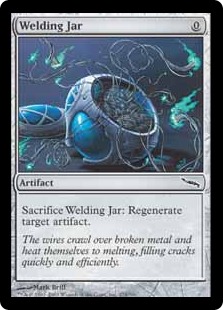
Cranial Plating is so powerful that it can make a card like Ornithopter, once a long-standing joke in the Magic world, into a lethal weapon. Very few people are clamoring to put cards like Ornithopter and Arcbound Worker into their Constructed decks without a substantial payoff, and payoff is exactly what Cranial Plating provides. Sometimes synergy is more important that individual card power, and while Cranial Plating has a good amount of help with Arcbound Ravager and friends, it is the biggest and best payoff in the deck.
So, is Helm of the Gods actually better than Cranial Plating?
Unfortunately (or perhaps fortunately) not, due to a troublesome little thing called context.
Historically, ‘artifact’ has been one of the most powerful card types in Magic while ‘enchantment’ has been the least powerful by a pretty wide margin. There’s a reason why there are seventeen artifacts on the Legacy banned list and only six enchantments. In Modern the count is eleven to zero.
This is further accentuated by the fact that artifacts come in more shapes and sizes than enchantments. Artifact lands, artifact creatures, mana artifacts — it is much easier for a deck to pack itself full of artifacts than enchantments. This changed with Theros and its bevy of enchantment creatures, however, and between that and enchantment-based removal it seems possible now to hit that critical mass necessary to make a card like Helm of the Gods reach its full potential.
Breaking new ground when a new set comes out is tough. While it’s not too hard to make new additions to existing decks, it is quite hard to flesh out brand-new strategies. Our first step is to determine what shell fits Helm of the Gods best. We know our core is going to be a lot of enchantment creatures, and hopefully some enchantment-based removal as well.
These are some of the more reasonable enchantment creatures:
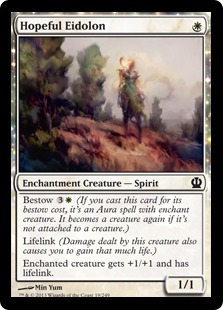
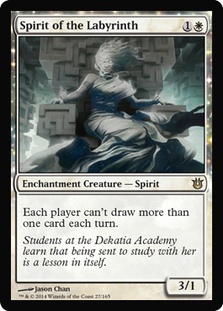
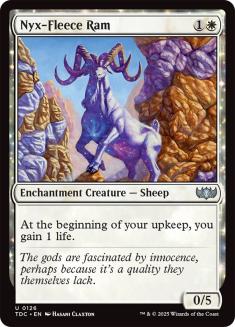
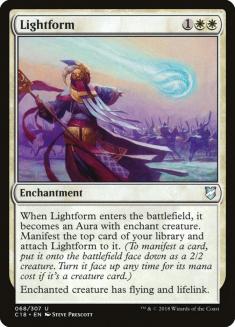
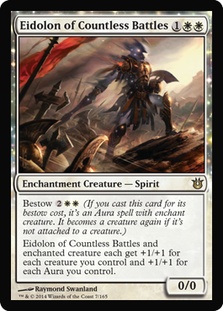
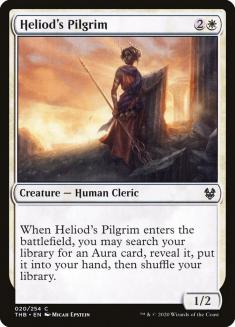
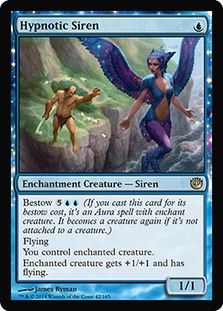
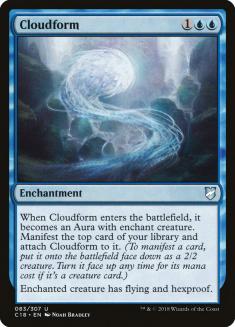
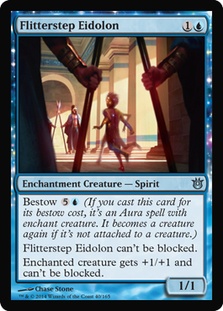
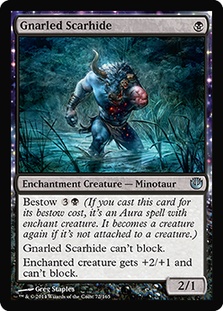
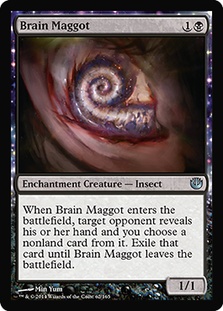
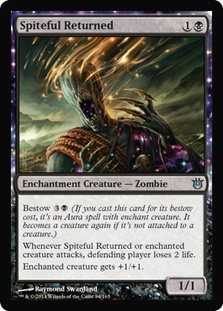
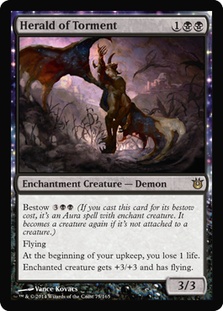
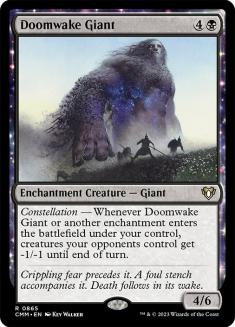
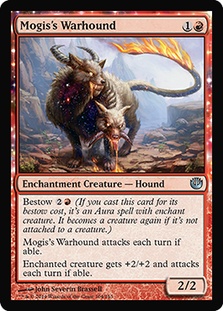
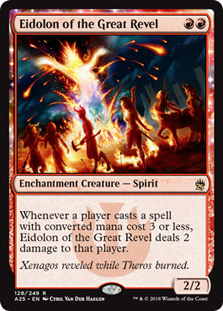
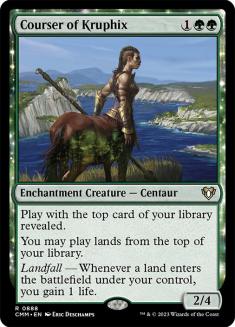
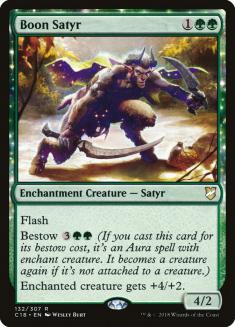
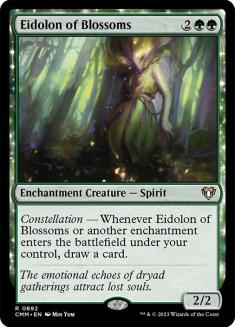
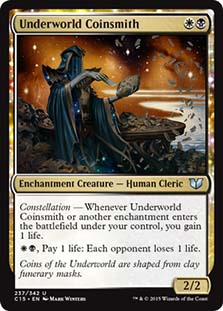
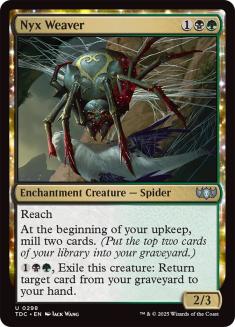
Lifelink is a very powerful ability in conjunction with Helm of the Gods, and white offers it to us via Hopeful Eidolon and Lightform. Spirit of the Labyrinth and Eidolon of Countless Battles are also fine creatures. White also gives us access to Heliod’s Pilgrim, which is another card proven to be solid.
Blue offers some evasion in Hypnotic Siren, Cloudform, and the underpowered Flitterstep Eidolon.
The best entries come from black, as Gnarled Scarhide, Brain Maggot, and Herald of Torment already have solid tournament pedigrees.
Red does not offer much, and green’s best cards are not suited towards the style of deck that Helm of the Gods wants to push.
Almost more important than our creatures is what kind of removal we can push, and almost everything comes up white:
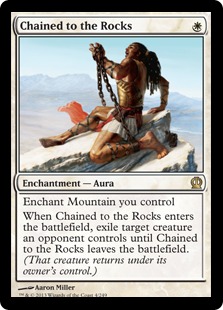
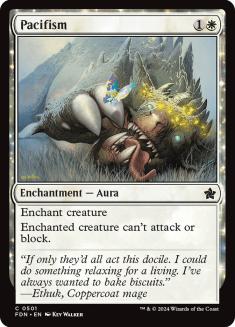
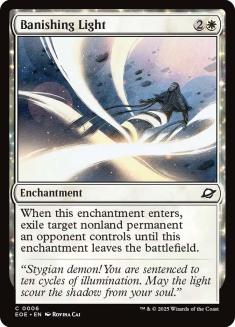
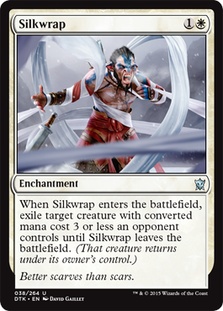
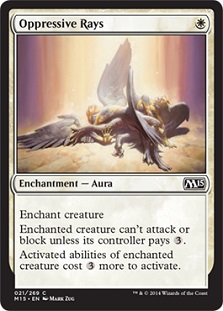
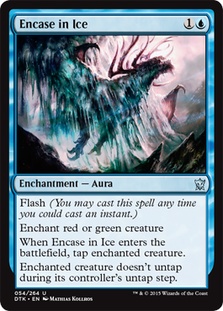
Aside from the sideboard-only Encase in Ice, white gives us a ton of options for removal. The best is unfortunately tied to red as well, but Chained to the Rocks is a major reason that a deck like this could even exist. If we break from W/R we are left making Pacifism, Banishing Light, and other options like Slikform work. Having every removal spell in your deck power up Helm of the Gods is quite powerful, and likely worth the trouble.
Lastly we can look at other random enchantments that may push us one way or another:
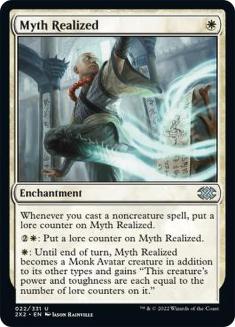
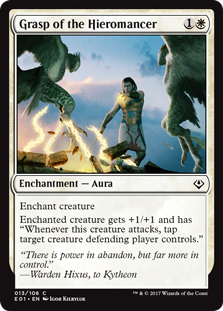
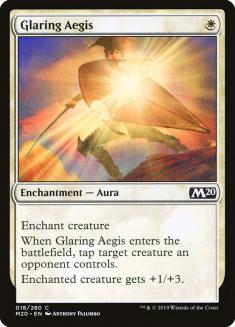
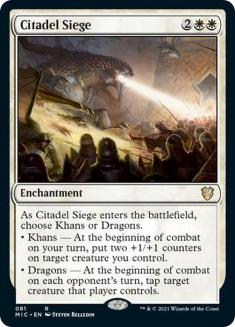
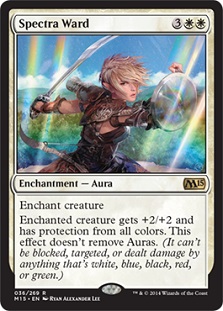
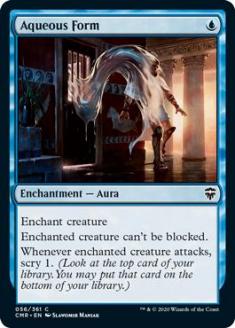
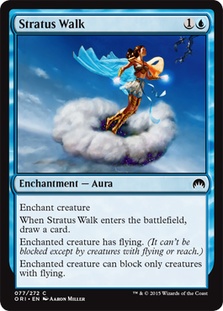
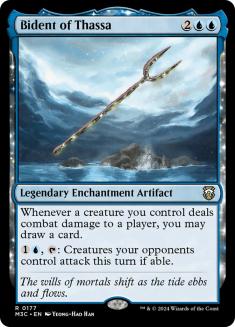
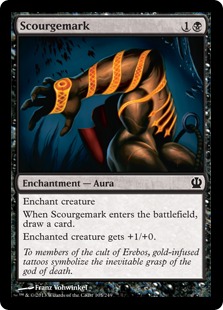
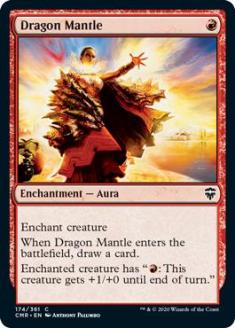
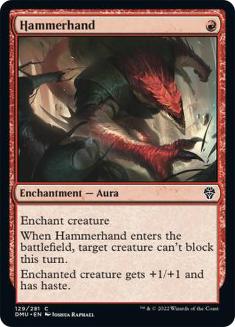
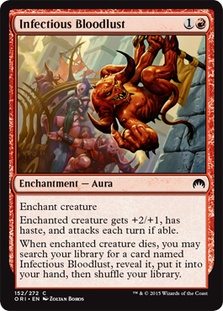
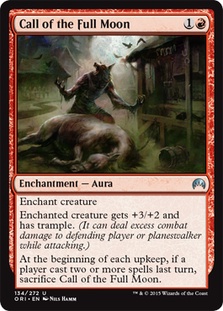
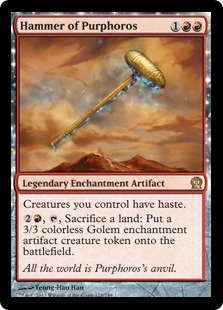
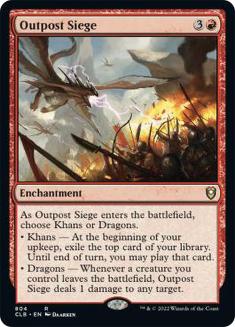
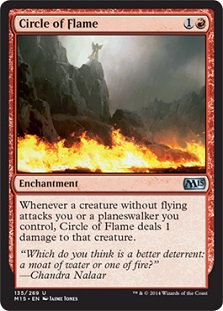
Many of these are auras, which further pushes us towards white as it makes Heliod’s Pilgrim very appealing.
Of the non-auras, Outpost Siege stands out as the most powerful, with Citadel Siege and Bident of Thassa also reasonable options.
The obvious first draft is a B/W build.
Creatures (27)
- 3 Hopeful Eidolon
- 4 Herald of Torment
- 4 Spirit of the Labyrinth
- 4 Spiteful Returned
- 4 Gnarled Scarhide
- 4 Underworld Coinsmith
- 4 Blood-Cursed Knight
Lands (17)
Spells (16)

The deck looks fine, but very unexciting. Helm of the Gods seems great, but our creatures are clunky, our removal is clunky, and I don’t know if we can handle going long against decks with more powerful cards.
If only Stoneforge Mystic was legal, we could have a more reliable way to find our Helm of the Gods and work to make our deck a bit more synergistic. And wouldn’t it be cool if there was a Stoneforge Mystic that could get us enchantments?
What’s that you say?
Ask and ye shall receive.
This was the point where the deck started to feel like it was coming together.
Relic Seeker seemed awesome. An already reasonable two-drop with just the +1/+1 from his Renowned trigger, finding another copy of the best card in our deck on top of that is just awesome. We were also able to play good cheap removal and some ways to enhance him to help him get through.
Heliod’s Pilgrim has already seen a good amount of play in Standard, and one of the best things it can do is search up Chained to the Rocks. Heliod’s Pilgrim takes that utility a step further in the deck, however, as the body is extremely relevant with our equipment.
The last big innovation was Outpost Siege. Outpost Siege is an absolutely incredible Magic card, but has almost completely fallen off the map due to how soft it is to Dromoka’s Command. Given that our entire deck insulates us against Dromoka’s Command, Outpost Siege is poised to run wild. Decks in Standard right now are absolutely rife with removal spells, and a card like Outpost Siege helps you to quickly invalidate them by overloading on threats.
We also have a good amount of lifegain from Helm of the Gods-powered Lightform and Hopeful Eidolon, which can help extend the game and allow our Outpost Siege and equipment to take over.
The result is a very interesting deck.
Creatures (18)
Lands (14)
Spells (28)

It is capable of very aggressive starts with one-drops and fast Helm of the Gods swings.
It is capable of going long, with Outpost Siege and Heliod’s Pilgrim providing ample card advantage.
It is a synergy-based deck that actually gets to play a good amount of quality removal, which is something most synergy-based decks don’t get to have room for.
Most importantly, while it has to work fairly hard to do it, it gets to make use of a very powerful card in Helm of the Gods.
The most awkward part of the deck is the manabase, but pains must be taken to make sure we actually have a mountain to enchant with Chained to the Rocks. We have nine effective Mountains in our deck, and while we have more red sources than white sources and only a smattering of red cards in our maindeck, the mana works well enough.
I really wanted to play one Foundry of the Consuls, as the late-game synergy with Helm of the Gods is fantastic, but the manabase just can’t handle it.
Your trio of enchantment creatures are definitely the Ornithopters of the deck. Hopeful Eidolon is amazing with Helm of the Gods and not very good otherwise, but it’s so good with Helm that it has a slot for now. Nyxborn Shieldmate is just another Enchantment Creature one-drop, but has the nice side effect of being a great way to push through Relic Seeker on turn three via Bestow. Spirit of the Labyrinth is by far the most reasonable of the three and hits pretty hard.
The core of the deck.
Relic Seeker makes sure you have access to your best card every game, while Heliod’s Pilgrim gives you a body and makes sure you have access to your second-best card in Chained to the Rocks. You also have a Dragon Mantle for a bit of utility against creature-light decks, but be careful about casting it with Spirit of the Labyrinth on the battlefield.
Lightform is very sweet card, as it does everything you want it to. It’s an enchantment, it provides an evasive body for Helm of the Gods, and can gain you a good amount of life in the process. I only wish we could search for it with Heliod’s Pilgrim.
Outpost Siege is another pillar of the deck, and the deck probably couldn’t exist without it. Banishing Light gives us two more removal spells that also have utility against non-creature decks and help to answer difficult problems like Elspeth, Sun’s Champion.
The sideboard is very speculative, as I have only tested the maindeck so far. Regardless, it is a good assortment of cards against a number of top decks, and shows some of the things that are possible with Heliod’s Pilgrim.
Roadtrip!
I’m embarking on a two-week road trip this week, which will feature stops at SCG Chicago and SCG Richmond, and I’m still selecting my deck for Chicago. Helm of the Gods is a very powerful and alluring card, but it presents a very difficult puzzle to solve. If I feel I have pieced it together by Saturday, look for me to be attacking for five on turn three with Hopeful Eidolon! But if not, I’ll hopefully still find something cool to play.
Don’t be shy about suggestions for cool places to stop on my trip (New York -> Chicago -> Richmond -> New York), and I will hopefully see all of you in Chicago!

